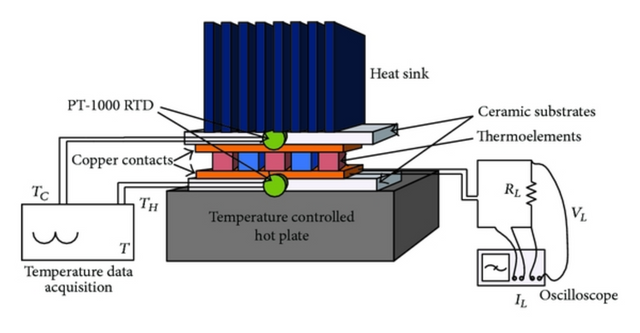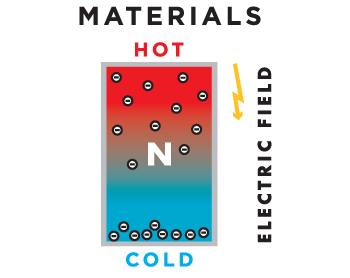Thermoelectric Generator
How Thermoelectric Generators Work for producing electricity
Thermoelectric power generation requires three major pieces of technology: thermoelectric materials, thermoelectric modules and systems that interface with the heat source.


HOW THERMOELECTRIC MATERIALS WORK
Thermoelectric materials generate electricity while in a temperature gradient. In order to be a good thermoelectric, materials must have the unique combination of both high electrical conductivity and low thermal conductivity: a rare set of properties for one material to hold. Nanotechnology can now be used to lower the thermal conductivity of semiconductors whose electrical properties are excellent, but manufacturing nanomaterials is not trivial.Anything—steam, for instance—will flow from hot to cold in a temperature gradient. In a thermoelectric material, electrons do the same thing. The extent to which electrons flow from hot to cold in an applied temperature gradient is governed by the Seebeck coefficient, also known as the thermopower.

In order for a thermoelectric to establish a large voltage while in a temperature gradient, its thermal conductivity must be low. This ensures that when one side is made hot, the other side stays cold. For many decades, the only semiconductors known to have both low thermal conductivity and high power factor were bismuth telluride (Bi2Te3), lead telluride (PbTe), and silicon germanium (SiGe): three expensive compounds using rare elements.Today, low thermal conductivity can be achieved by creating nanoscale features such as particles, wires or interfaces in bulk semiconductor materials. These nanoscale features lower the thermal conductivity of the semiconductor and do not effect their strong electrical properties.The efficiency of thermoelectric materials is governed by their “figure of merit” z. A large z is important in creating an efficient thermoelectric generator, but it is not the only important metric.
details source: